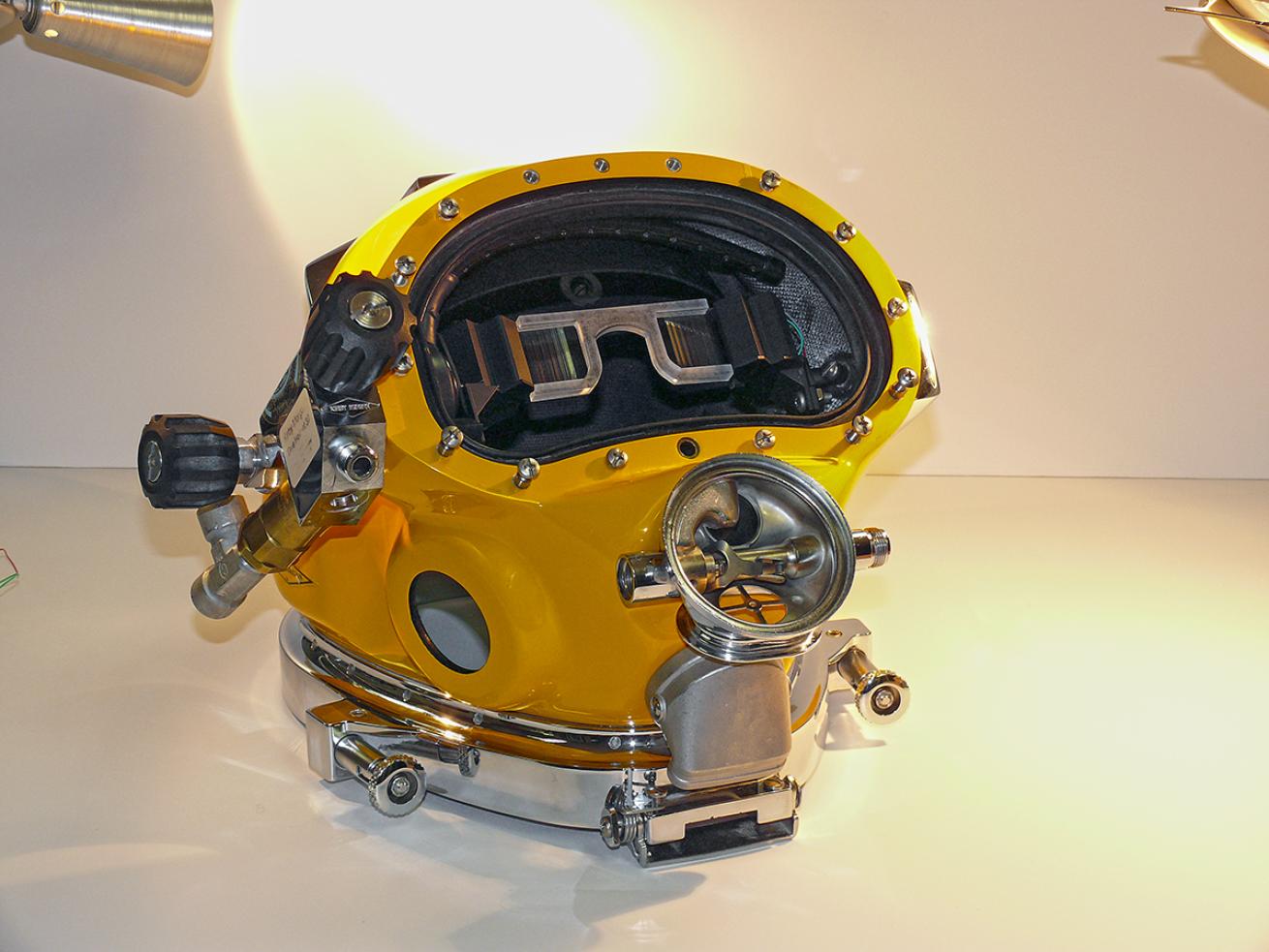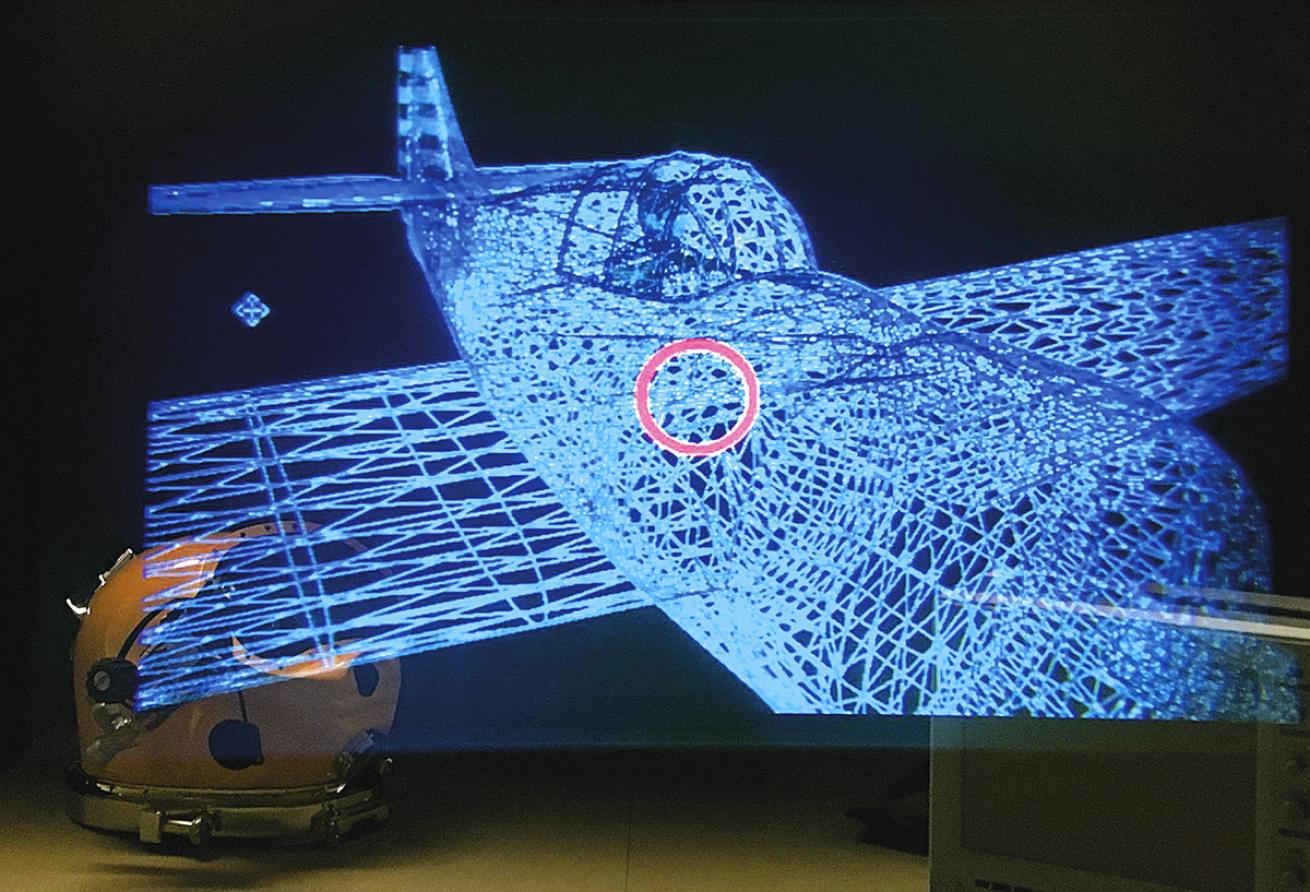Navy Creates Dive Helmet with Virtual Reality Display and POV Similar to Video Games

Courtesy naval surface warfare center/Katherine MappThe latest dive helmet created by the U.S. Navy is intended to provide virtual-reality simulation and information to military divers.
MILITARY DIVING IN HD
No visibility? No problem. At least, not with the Navy’s innovative Divers Augmented Vision Display (DAVD). The prototype was designed to attach on the interior of a dive helmet, providing high-definition, head-up data display to military divers who operate in zero-visibility conditions.
By building the head-up display inside the dive helmet (instead of attaching it on the outside) “it can provide a capability similar to something from an Iron Man movie. You have everything you visually need right there within the helmet,” says underwater project engineer Dennis Gallagher.

Courtesy naval surface warfare center/Katherine MappLab simulation of an augmented-reality image of an airplane seen through the DAVD helmet.
Giving Tony Stark a run for his money, DAVD provides divers with information, including — but not limited to — real-time situational sonar, augmented-reality video and text messages. Current data-sharing procedures in the field are limited to a detailed predive briefing and audio communication once underwater.
Based out of the Naval Surface Warfare Center in Panama City, Florida, Gallagher and his team have been collaborating with more than 20 commercial divers who work in fields spanning military operations and salvage diving, to ship husbandry and other commercial underwater applications to fine-tune the display system.
Now in its prototype phase, DAVD was crafted using a 3-D printer to tweak the mask-attachment apparatus. Since then, divers have tested the data-display device in a laboratory setting with an overwhelmingly positive response.
“We constantly engage with the [divers]. If there is a vision they have, we can make it happen,” Gallagher says. “By the time we’ve gotten where we are now, which is in the lab, we are presenting them information that we’ve gotten from feedback that is the kind of information they need.”
Gallagher anticipates that DAVD will be ready for in-water testing by the end of this year. While the project’s current focus centers on military diving, he says that DAVD will expand far beyond that.
“As we move forward and want to get this into the fleet, we can have applications for commercial diving, first responders — anybody who does this kind of work underwater.”










